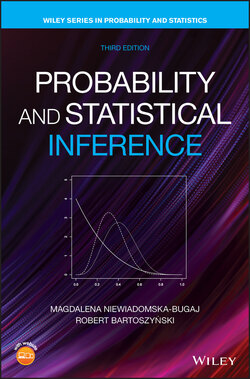Читать книгу Probability and Statistical Inference - Robert Bartoszynski - Страница 75
Solution
ОглавлениеWe can solve this problem treating the choices of consecutive letters as “operations.” The first operation must give the letter M; hence, there is only one way of choosing it. The next letter (out of the remaining 10) must be an I, and it can be selected in four ways. Proceeding in this way, the sequence of consecutive 11 choices leading to the word MISSISSIPPI can be performed in ways, which equals . On the other hand, the total number of ways one can perform the operations of consecutively choosing letters from the set is . Consequently, the required probability equals
(3.5)
In this solution, the letters are regarded as distinguishable, as if we had four letters , labeled and , and similarly for the other letters. In this case, the numerator and denominator are, respectively, the number of ways one can order the set of distinguishable letters so as to form the word MISSISSIPPI and the total number of orderings. Alternatively, one can regard the identical letters as indistinguishable, and in this case, we have only one way of ordering them so as to spell the required word, and a total of distinguishable ways of ordering these letters. Indeed, the denominator here represents the number of ways of permuting letters so as to leave the arrangement invariant. Now,
which is the same as (3.5).
